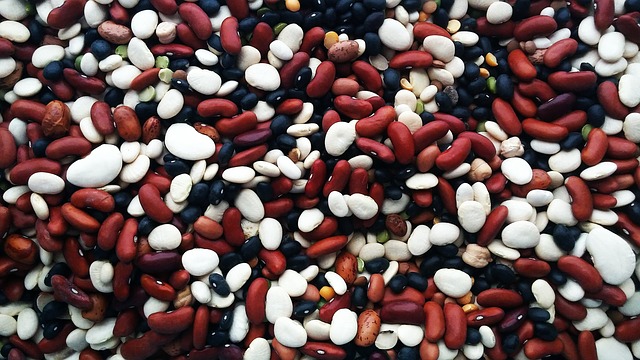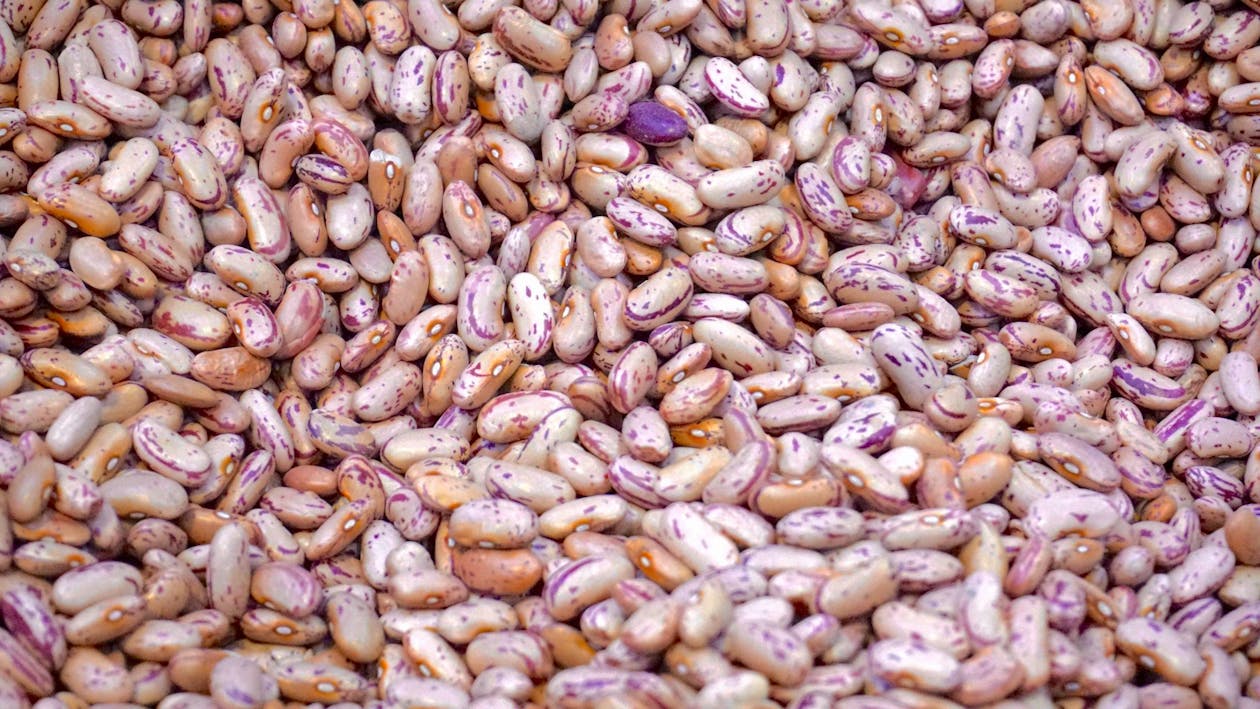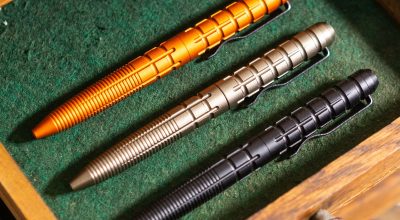Beans are small seeds packed with rich vitamins and protein. They are often chosen by vegans as a substitute for meat. There is another great feature that beans have that makes them the go-to sustenance for emergency situations. They can last up to 3 years when they are stored vacuum sealed.
Generally speaking, beans have an interestingly long shelf life, if stored right of course. If you are preparing to stock delicious and nutritious beans for nuclear fallout, you better read this before you begin.
A lot of people prefer storing beans in vacuum-sealed airtight containers such as jars and similar containers. But is this the best way to preserve your beans? Here, we’ll find out the answer to that question and also go over other ways to store your beans to preserve them for longer spans of time.
What is Vacuum Sealed Dry Beans?
From the term itself, this process of preserving food through the use of airing out the environment where the food is supposed to be stored. Air is an element that contributes to the faster spoilage of food. When it is reduced or, at this point, removed, it is expected that the food would certainly increase its shelf life.
This will make it easier to store more of the food without necessarily getting worried that it will be wasted if not consumed soon.
Vacuum sealed beans are often offered in the supermarket. Companies that mass-produce vacuum dry sealed beans to be sold in the market are known to offer these products at expensive prices.
This is why many opt to do the vacuum sealing of beans on their own. If you are one of these individuals, then read on and learn how to best seal your beans for later consumption.
What Is the Shelf Life of Vacuum Sealed Dry Beans?
Airtight containers are one of the most common ways to store dry beans. When you’re walking down the supermarket aisle for canned goods, you’ll usually find beans that are stored in airtight cans.
These vacuum-sealed cans can extend the shelf life of dry beans by about 3 or more years depending on the condition of the beans and where it is stored.

Some other common airtight vacuum-sealed containers you can use to store your beans include:
- Vacuum Sealer Containers
- Durable and air tight Mason Jars
Rubbermaid Brilliance is one brand of vacuum container that we recommend due to it’s excellent build quality and food-safe material.
One thing you should also remember is that storing dry beans in sealed plastic bags isn’t exactly the best course of storage. The problem with this is that moisture and insects can still enter the bag and can rid the beans of their freshness and nutrition.
Now, let’s take a look at WHERE you should store the beans. As mentioned earlier, dry beans can last 3+ years if stored in good containers and stored in an optimal place. The best places you can store your beans are in cool and dark areas.
Thing is, though they last longer if you don’t rotate through them in say, every 3 months or so, the beans would most likely go bad because they can still rot through airtight containers.
Make sure to remember the expiration date of the beans as well or better yet, write it down on a piece of tape or paper and stick it to your dry bean container.
Another thing you should also keep in mind when storing dry beans in any way is that before you store them, check for insect eggs first. This happens quite often in the case of beans, one way you can make sure your beans don’t have eggs in them is by checking them yourself and/or by freezing or microwaving them first before storing them.
In general, if you store your beans perfectly using an air tight container in a cool and dry place, it can stay fresh for more than 3 years.
Other Methods of Storage for Dry Beans
Now let’s take a quick look at other simple ways you can extend the shelf life of your dry beans.
Freezers
Freezers are a very viable option when storing dry beans. Inside of the freezer is a cool and dark place which as mentioned earlier, is the best environment for storing dry beans. Storing your dry beans in a freezer can extend the life of your dry beans indefinitely.
Again, mark the expiration date of the beans on your container even when in the freezer so that you can rotate through them easier.
Oxygen Absorbers in Your Containers
A simple tool you can use to extend the shelf life of your dry beans without using airtight vacuum-sealed containers is by using oxygen absorbers.
Using these in your containers can prevent insect eggs from surviving with your dry beans and can also prevent the beans from going bad fast. We recommend buying this generic freepak oxygen absorber, it’s very cheap and will do the job perfectly.
Mylar Bags with Oxygen Absorbers Included
Mylar bags are also a very viable option for dry bean storage because Mylar is extremely impervious against gases and also block light from entering.
Oxygen absorbers can also be placed in the bag to assist in reducing the oxygen in the bag to further preserve your beans.
Health Benefits of Eating Vacuum Sealed Dry Beans
So, why would you be interested in vacuum-sealing dry beans?
Believe it or not, storing dry beans for later consumption has already been a long-time practice even as recorded in human history. Accordingly, for many years, preserved dry beans have made it easier to keep soldiers nourished with the right amount of vitamins and proteins that they need to last longer in the field.
Other instances when preserved beans were used to nourish communities include times when certain nations and groups of people are not capable of getting basic nourishment because of the tensions in the society.
Preserved dry beans are easier to transport and are easier to cook. One serving of these beans added with a few ingredients and a few spices would already make a perfectly complete meal. So, if you are going away to travel or hike for a few days or a few weeks, it would be best for you to choose preserved dry beans to be added to your food choices in storage.
These modern times, vacuum-sealing dry beans are much easier than preserving this ingredient in the past. At the same time, storing them away is also more effective now than it was before. Finding a great set of recipes to cook your beans out in camp or in the hike would also make it easier for you to prepare your stored beans and be properly nourished even when you are away from main sources of fresh ingredients.
When in an emergency situation, many families have also found it beneficial to have a set of vacuum-sealed dry beans ready for consumption. Since the shelf-life of these preserved beans takes up to three years, it is evident that keeping them in proper storage for a long time should not be a problem at all.
Now, let’s get a little bit technical on the nutrition that we can get from vacuum-sealed dry beans.
- Cooked beans equate to at least 230 calories per cup
- Beans are low in fat and have no cholesterol
- One cup of cooked beans provides you enough fiber, up to 60% of your required fiber intake each day
- One cup of cooked beans contain at least 30% of protein and 14% carbohydrates
- One cup of cooked beans contains 3 main vitamins and 7 primary minerals that the body needs
One more reason to consider when eating beans after cooking them is that they keep you feel like you have a full stomach for longer hours. This is because beans are slow to digest.
So for those who are on a diet, eating beans is often part of the recommended food in the selected menu.
The best benefits from cooked beans could also be achieved through combining them with the right ingredients. Some combinations may include:
- Beans matched with cornbread
- Beans cooked and added with other basic ingredients in a burrito shell
- Beans cooked and added with burrito ingredients prepared in a flour tortilla
- Beans soup served with biscuits
- Beans served with steamy hot brown rice
With the right partner, a bean meal will give you the essential supply of amino acids that are critical to the body’s development and sustenance, especially during emergency situations.
What happens when you have beans included in your regular daily meal?
It has been observed through research and medical studies that if a person does not have any allergies to beans, consuming them daily will help in reducing the possibilities of developing cancer, heart diseases, and diabetes.

Things to Remember When You Open Vacuum Dried Beans before Cooking
Although vacuum sealing dry beans is generally an effective way of preserving beans, there are instances when wrong preparation may actually jeopardize the result of this preservation.
When the beans you have stored are already sprouted, this means that air has already entered the storage.
When this happens, it does not mean that you cannot eat the beans anymore. Instead, you need to spend extra time to clean the beans and cook them before they are ready for eating. For instance, dry beans contain chemicals such as PHA or phytohaemagglutinin which can be specifically harmful to the human body.
When you are poisoned by this toxin, you will actually feel nauseous, you will vomit, and will experience diarrhea. Although the immune system can naturally pass this form of poisoning as it is, you should still seek medical assistance to make sure that nothing gets even more complicated than it already is.
If no complications are present, then this condition might well be over between three to four hours. Make sure to take a lot of rest and hydrate so as not to lose too much liquid in the process of getting the poison out of your system.
Key Takeaways
Overall, dry beans are rich in nutrition, protein, minerals, and amino acids. When they are partnered with the right food ingredients and cooked according to healthy recipes that are designed to give you the best benefit from your preserved vacuum sealed dry beans.
Whether you are going out for a long journey or a hiking adventure; or perhaps just preparing for the days when sudden emergencies occur, you can be sure that vacuum-sealed dry beans would be able to suffice your nutritional and needs for sustenance.
Picking the right recipes for you to cook your preserved beans should be part of your survival list as well. As noted in this post, it is not that hard to cook vacuum-sealed dry beans. With the right spices and the right set of simple ingredients, making a tasty and healthy meal will certainly be a walk in the park.
Considering the nutrition, protein, and minerals that vacuum-sealed dry beans have, it is an easy choice for anyone who wants to keep eating proper and healthy food even in the midst of unusual conditions.
They’ll also last a long time so you don’t have to worry about them going bad. When stored correctly they can survive for over 3 years inside a vacuum container placed in a cool and dry place. Make sure to follow the tips outlined in this article so your vacuum dry beans won’t go bad.


